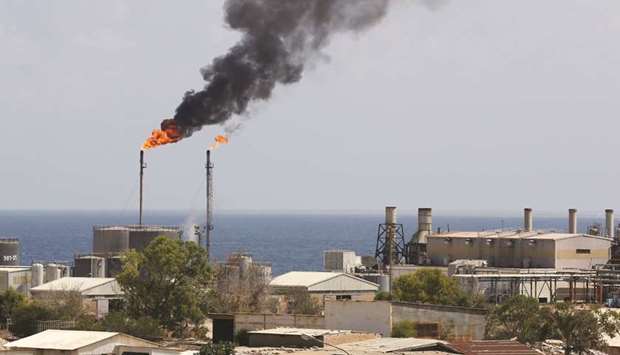Libya plans to export just 1.2mn barrels in August, down almost 40% from July, as most of the Opec member’s oil facilities remain shut amid a civil war.
The Bouri and Farwah terminals will each ship one cargo of 600,000 barrels, according to an initial loading programme seen by Bloomberg. Both terminals lie offshore in the Mediterranean Sea, miles distant from the turmoil disrupting the bulk of Libya’s onshore oil facilities.
Although it holds Africa’s biggest crude reserves, Libya’s production has plummeted to about 90,000 barrels a day from 1.2mn last year. Output collapsed largely because supporters of Khalifa Haftar, an eastern commander fighting against the UN-backed government in Tripoli, halted flows from many oil fields and ports.
The National Oil Corp last month briefly lifted force majeure export curbs at all ports, enabling a tanker to load about 730,000 barrels of crude from the eastern terminal of Es Sider. Barely a day later, Haftar said he would continue to blockade ports and oil fields, forcing the NOC to reinstate the exports ban. The brief re-opening and swift reversal were emblematic of Libya’s political and economic upheaval since the 2011 toppling and killing of strongman Muammar Gaddafi.
Haftar’s blockade, which started in January, has cost the country $7bn in lost revenue, according to the central bank. Libya pumped as much as 1.6mn barrels daily in early 2011, before Gaddafi’s ouster.
While the Tripoli-based NOC has nominal control over all oil facilities, different armed groups have repeatedly seized or closed them. The shutdowns and lack of maintenance have damaged fields and wells and will cost the NOC hundreds of millions of dollars to repair, the company’s chairman Mustafa Sanalla said in an interview in June.
Libya’s strife has hardened into a proxy war involving regional powers.

A general view shows the oil installation in Zawiya, Libya (file). Libya plans to export just 1.2mn barrels in August, down almost 40% from July, as most of the Opec member’s oil facilities remain shut amid a civil war.


